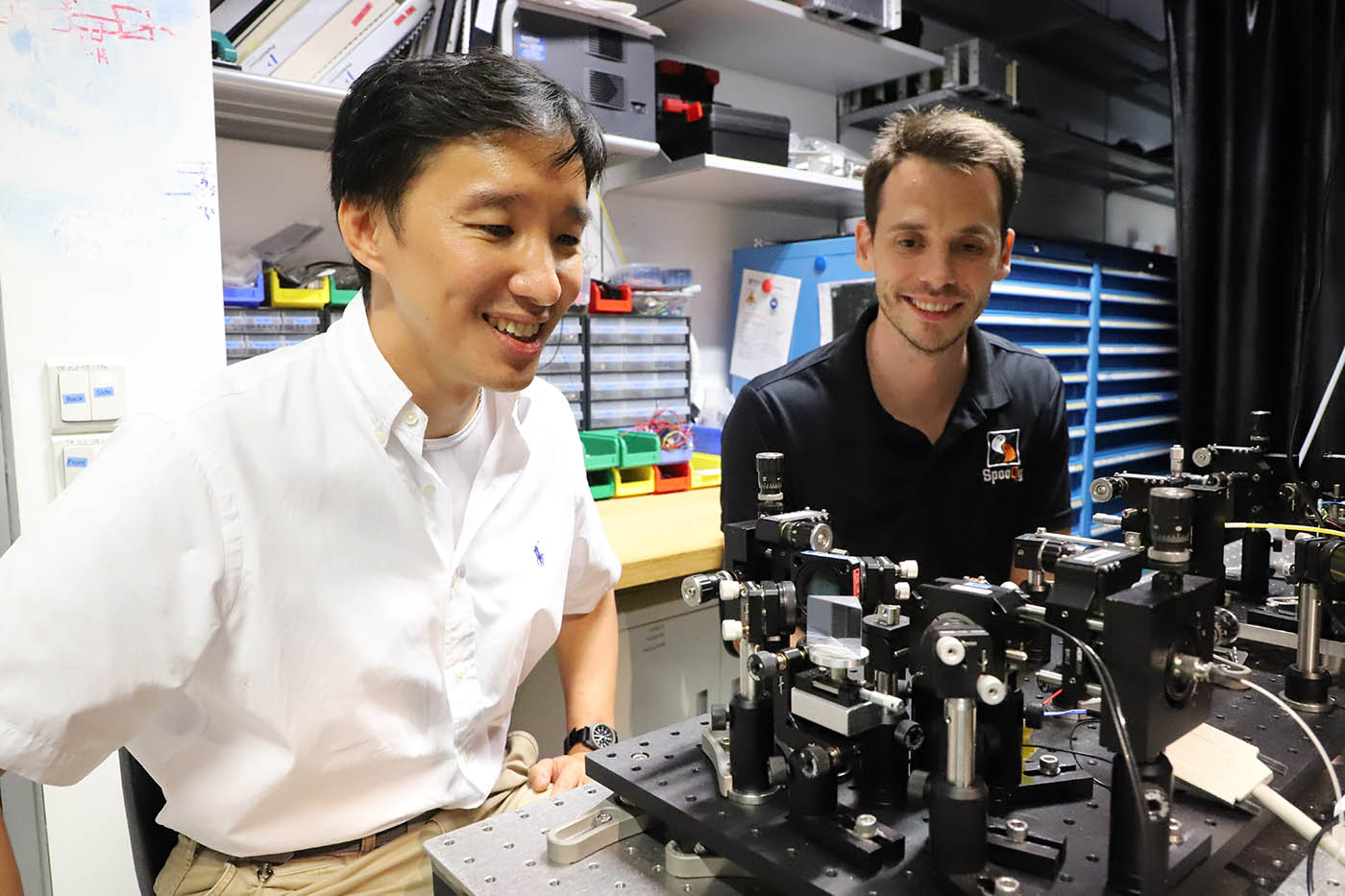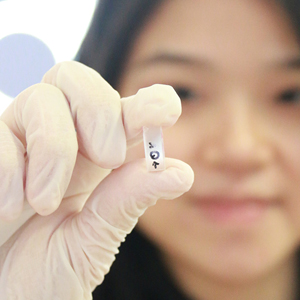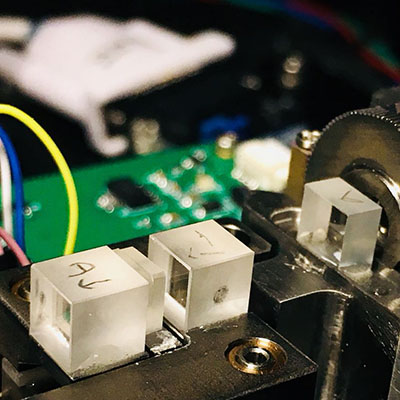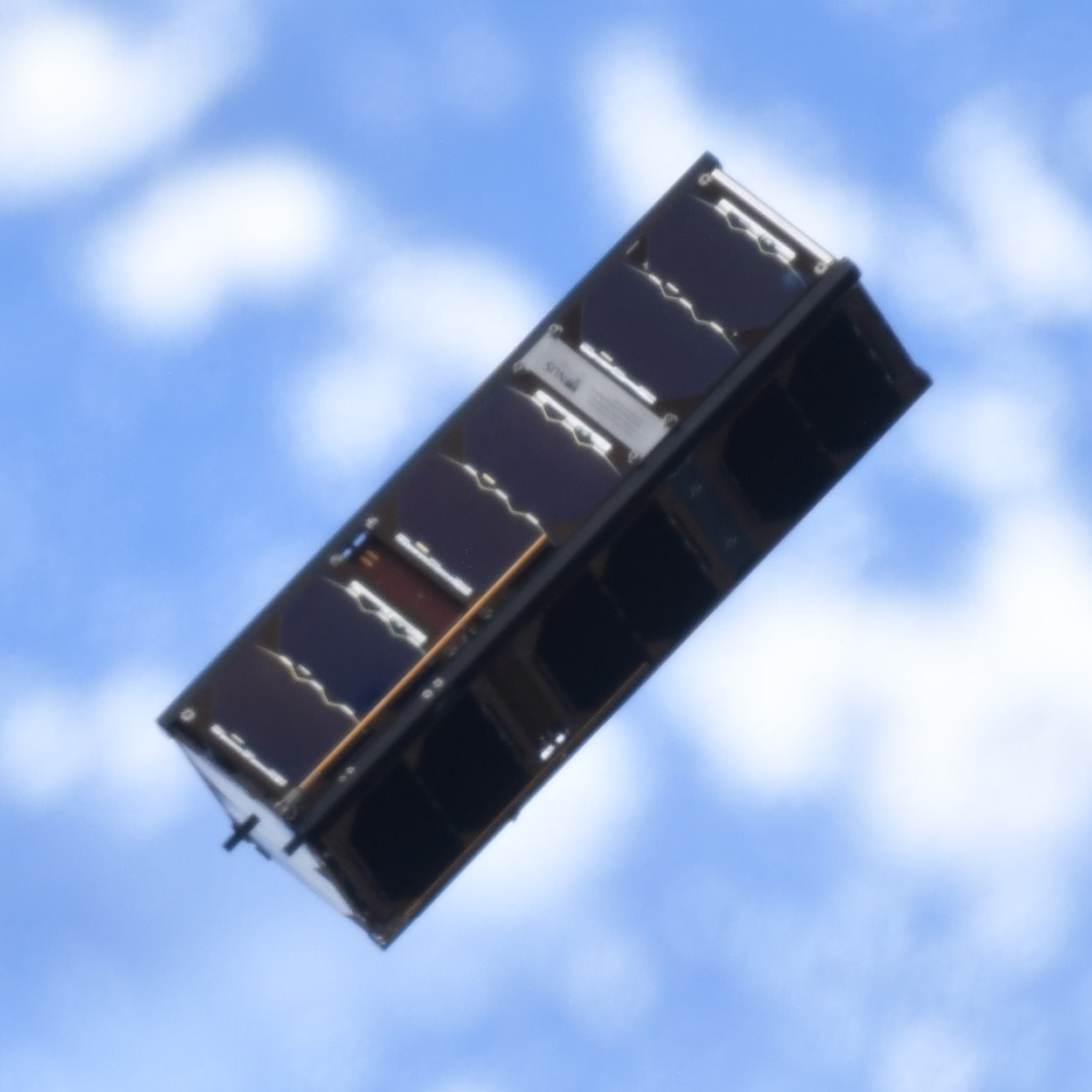Highlights
Laser swap can cut cost for entangled photon production
 CQT researchers including Alexander Ling (left) and Alexander Lohrmann (right) have found a series of improvements to the design of entangled photon sources.
CQT researchers including Alexander Ling (left) and Alexander Lohrmann (right) have found a series of improvements to the design of entangled photon sources.
Why use an expensive part when a cheaper one will do? The team of CQT’s Alexander Ling has found yet another way to be more efficient in making entangled photon pairs, this time using a broadband laser input. As well as saving cost, the innovation could support applications needing high photon rates.
Entangled photon pairs are a building block for quantum technologies. Pairs of light particles sharing the ‘spooky’ connection can help users create encryption keys, synchronise time, teleport information and make precision measurements.
Writing in Applied Physics Letters in January, Alexander and his team predict that their new technique applied to the brightest lasers could make billions of pairs of entangled photons per second – an unprecedented rate that could be useful in multi-user networks or in space communication, where you expect high signal losses.
The work was highlighted by the American Institute of Physics publication Scilight, which features the most interesting work across the Institute’s journals.
Pair production
A typical scheme for creating entangled light particles employs spontaneous parametric down conversion (SPDC). A laser is shone through a crystal material chosen for its interaction with light, such that a single incoming photon is sometimes turned into two entangled outgoing photons.
Alexander’s team has expertise in building compact and rugged quantum light sources for devices including satellites. The research group has already found other engineering adjustments that improve their SPDC sources – from using thick crystals to leaving the elliptical beam shape of the laser uncorrected.
The latest innovation is to swap a specialised narrowband laser diode for a low-cost, broadband, free-running laser diode, that are potentially more powerful. The team are using lasers that operate around 405nm, a violet-blue colour. They create entangled photons with wavelengths around 810nm in the infrared.
The light from the free-running laser is about 4 orders of magnitude broader than the light used in a typical quantum entanglement experiment. This is a problem for SPDC because some parts of the process are sensitive to the light’s wavelength: having a range reduces the quality of entanglement that is created.
Breadth and brightness
Previous attempts to use broadband lasers filtered the SPDC light to reduce the spread. This works but reduces the light’s overall brightness and therefore reduces the rate that entangled photons are made.
Alexander and his colleagues Alexander Lohrmann, Chithrabhanu Perumangatt and Aitor Villar found a way to compensate for the wavelength differences by using an additional pre-compensating crystal that prepares the phase of the broadband pump light before SPDC takes place.
Using the device and standard detectors, the team observed entangled photon pairs at a rate of 0.56 million per second per milliWatt of laser power (the generation rate is actually 25 times larger). These type of laser diodes, can in-principle, reach an output power of 1W, making a production rate of billions of photon pairs per second within reach.
The next challenge is designing a multiplexed detector system that can observe all these entangled photons, because this rate outpaces many of the available detectors today.
Related Stories
 | Thick crystals shine in photon-pair source tests March 21 2016 |
 | Design innovations smash a record for photon source brightness May 16 2018 |
 | CQT's quantum satellite combines art with science July 04 2019 |






